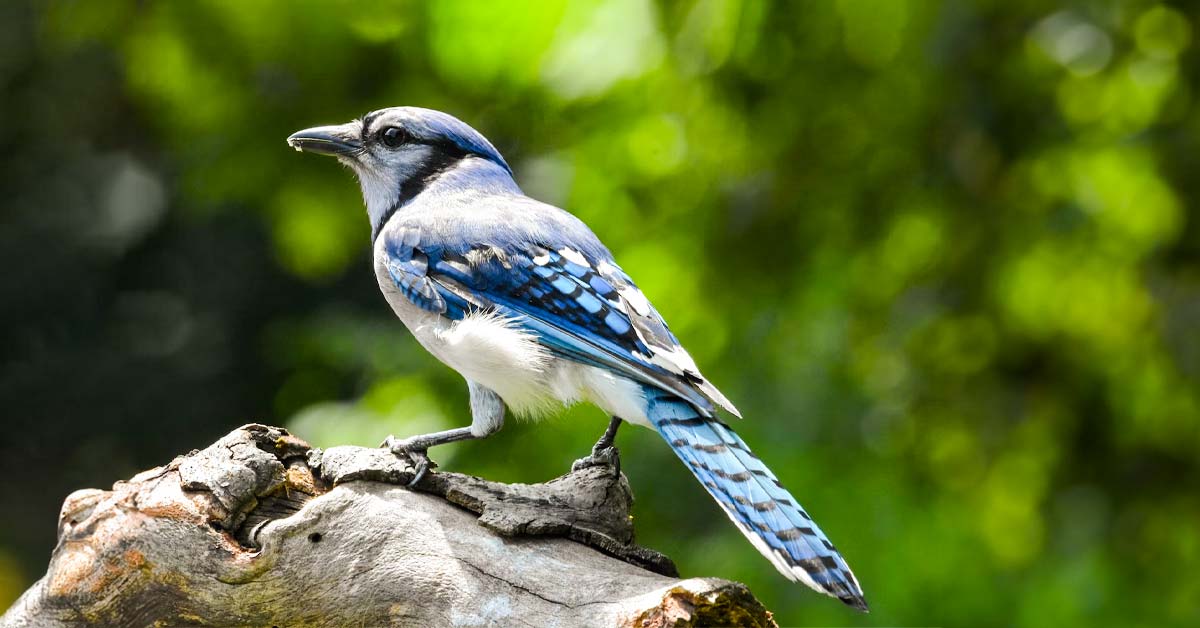If you’re interested in the blue birds in Tennessee, you’re in for a treat!
The state is home to 400+ birds, with over 100 of them commonly found in parks and public areas. After all, Tennessee has 1 national forest, 56 state parks, and 14 national parks, which means acres and acres of prime living areas for these TN birds.
Since it’s going to take me a long time to discuss hundreds of birds, let’s focus on my favorite color first and get to know some of the cool blue Tennessee birds.
8 Cool Blue Birds in Tennessee
1. Blue Jays (Cyanocitta cristata)
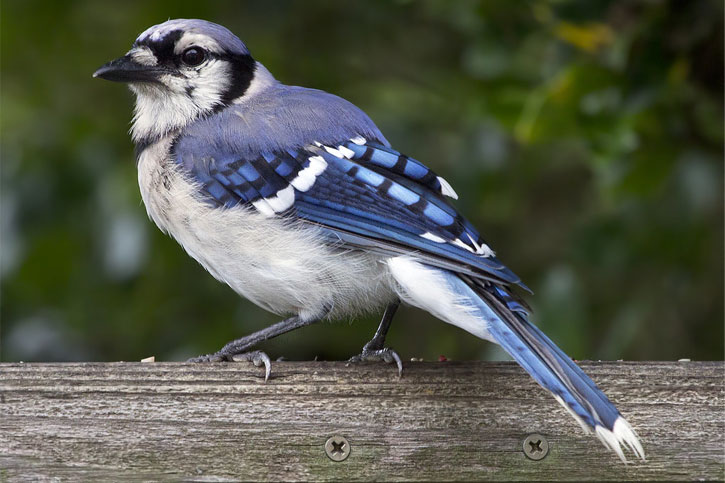
Blue Jays, despite their cool blue feathers, are actually part of the crow family. And although they didn’t get the crow’s dark and mysterious looks, they’re just as intelligent and (for some people) annoyingly noisy.
Blue Jays are not sexually dimorphic, which means the males and females do not have color differences with their feathers like many other bird species.
Both males and female Blue Jays have royal blue feathers with black bars, white underbelly and throat, and a black “necklace.” Their heads have a mix of blue, white and black, along with a black bill and blue crest on the top.
Female Blue Jays look exactly like their male counterparts, except they are a bit smaller in size (but not so much as you’d immediately see the difference).
2. Indigo Bunting (Passerina cyanea)
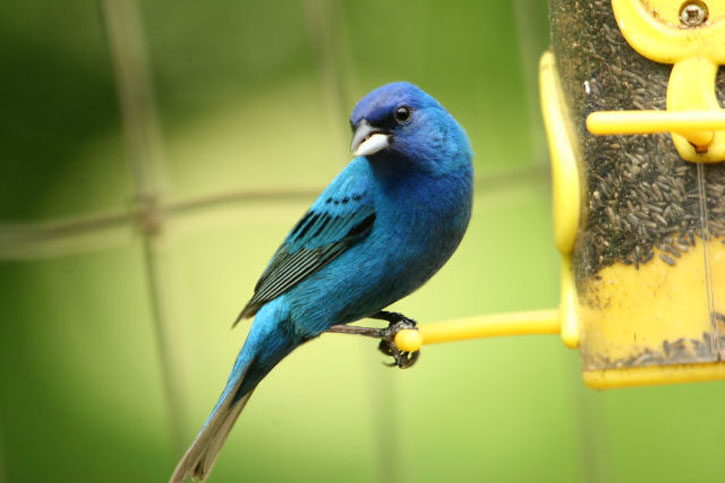
The Indigo Bunting that you see above is a male and was photographed during mating season (it’s the only time they’re this beautifully blue-colored).
- Male Indigo Bunting appearance: Unlike the other blue birds in Tennessee, the male Indigo Buntings are more on the turquoise side. They have vibrantly blue-hued feathers from their beaks to their tail feathers during mating season. After this period, they look like their female counterparts.
- Female Indigo Bunting appearance: Females are brown with some streaks on the breasts, a light-colored throat, and sometimes grayish or bluish tinge on the tails, wings, or rumps.
As migratory birds, Indigo Buntings are only found in Tennessee in the summer. They can be found along roadsides, in shrubbery areas, and woodlands with water sources nearby. In the winter, they stick to trees and grasslands.
Just like the melodious songbirds of PA, the Indigo Buntings are true songbirds that are known to sing over 200 songs within an hour.
3. Blue Grosbeak (Passerina coerulea)

The Blue Grosbeak is famous among the Tennessee birding community because these birds are pretty reclusive. You don’t see them much in the wild, even if it has been recorded to prefer nesting in TN since the 1940s.
Blue Grosbeaks are migrators. They spend summers here in Tennessee (and nearby areas) from April to August, then migrate to Southern Mexico, Central America, and the Caribbean in winter (from late September onward).
Blue Grosbeaks are about 8 inches long and have very distinct cone-shaped bills.
- Male Blue Grosbeak appearance: Only males are vibrantly blue in color with a silver bill and light-brown to rust-like wing bars.
- Female Blue Grosbeak appearance: Females are cinnamon-brown in color with blue-tinged tails, light brown underparts, and golden brown heads.
Blue Grosbeaks love to stay in unkept fields, scrubby flatlands, areas with tall trees or thick shrubbery where it is easier to find seeds, grains and insects.
4. Cerulean Warbler (Setophaga cerulea)
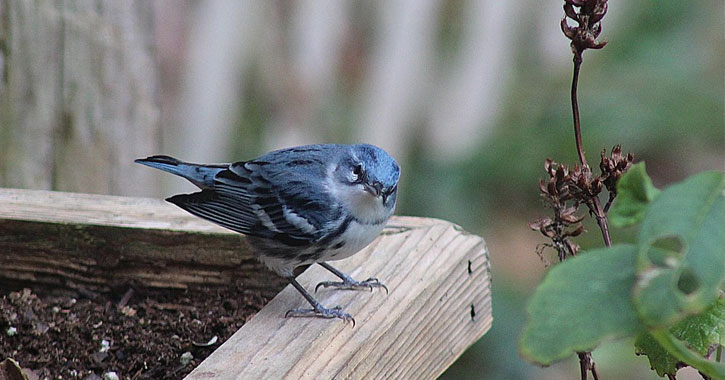
Cerulean warblers are long-distance migrants that breed during spring and summer in Tennessee (and other nearby states in the midwest and northeast), then head out to South America for winter.
Cerulean warblers are small (about 4 inches long). Males and females look slightly differently though:
- Male Cerulean warblers appearance: Males are sky-blue in color with white wing bars. They have streaked black-and-blue stripes on their sides and necks with a white belly and darker-blue streaks on their backs.
- Female Cerulean warblers appearance: The females have a bluish-green plumage with a hint of yellow wash on their underpants. They also have whitish eyebrows and white wingbars.
Cerulean warblers are not common backyard birds, so don’t expect them to visit your feeders anytime soon. These birds prefer to stay in their habitats – deciduous forests with mature forests, where they feed on plants and insects.
5. Northern Parula (Setophaga americana)
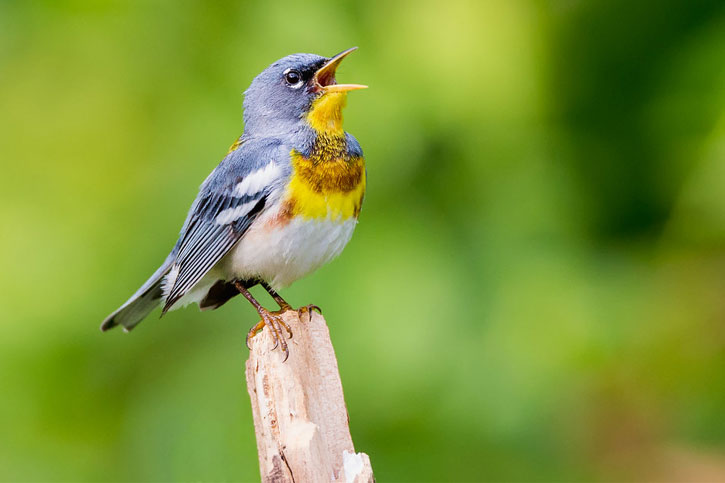
The Northern Parulas are small warbler birds, which are uncommon in the backyards of Tennessee. This is because these small-sized birds live at the treetops of dense forests with nearby streams and marshes.
The Northern parula is about 4.5″ long with similarly-colored hues between its male and female species. Both have a stunning white strip above and below their eyes – sort of like eyeliner – that you can’t miss.
- Male Northern parulas appearance: Males have a bluish gray plumage with a yellow-green patch on their backs and chest.
- Female Northern parulas appearance: Females have feathers that are more on the gray side than blue. Their colors are generally muted.
Northern parulas feed on nectar, seeds, berries, spiders and other small insects.
6. Belted Kingfisher (Megaceryle alcyon)
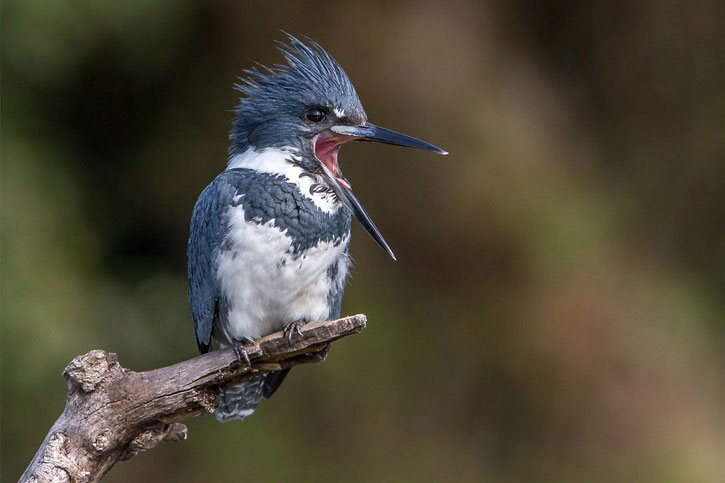
Belted kingfishers are found all over the country. Some of these blue birds in Tennessee stick around year-round, even if they’re known migrators.
Belted kingfishers are stocky-looking birds that measure around 12 inches long. To match these stocky bodies, they have a distinctively long bill, a large head, and a stylish “high crown” on top of their heads.
Males and females both have predominantly bluish gray feathers, but their highlights vary color-wise.
- Male Belted kingfishers appearance: Males have a white rings around their necks and fluffy white chests.
- Female Belted kingfishers appearance: Females also have the white ring and white chest. You’ll know it’s female when you see the bright chestnut-colored band under or over their white chests.
Belted kingfishers live near ponds, lakes, rivers, and streams. They’re not really known as backyard birds, but these birds could be encouraged to visit a garden with ponds or streams.
7. Barn Swallow (Hirundo rustica)
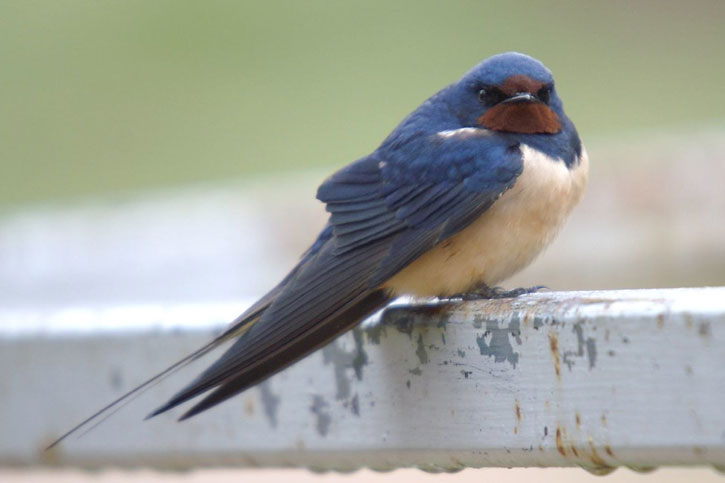
Barn Swallows are the most abundant swallow species in Tennessee and in the country. They live in open fields, coastal waters, pond marshes and pastures all over the state.
Barn Swallows prefer nesting in already-made structures like barns, hence their name.
These adorable birds are small (about 7 inches long) with a flat head, short thick neck, and thin bill.
- Male Barn Swallows appearance: Males have a striking metallic blue plumage with rust brown underparts, chestnut-colored forehead, and a long fork-like tail with white base.
- Female Barn Swallows appearance: Females have similar colors and features, except the overall color is lighter and their tails are significantly shorter.
Barn Swallows feed on wasps, flies, beetles, and other large-sized insects.
8. American Kestrel (Falco sparverius)
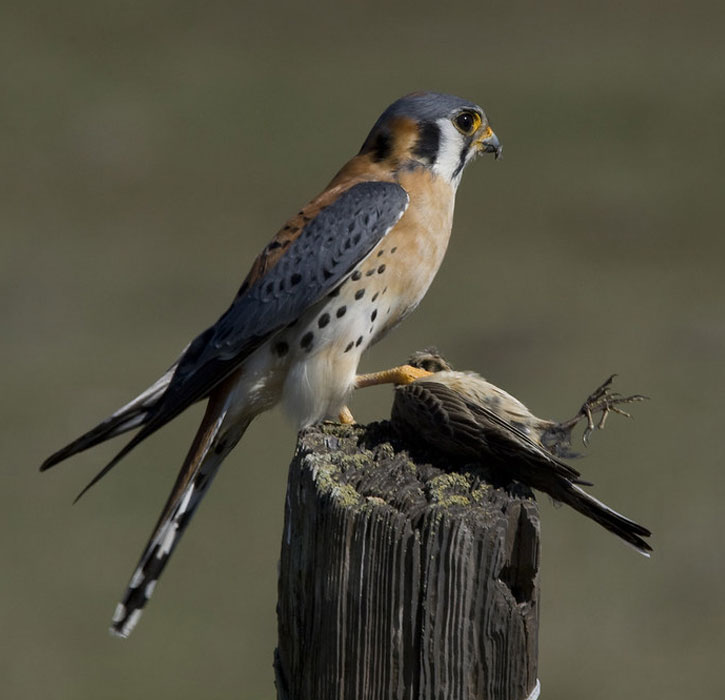
The American Kestrel is a member of the falcon family. It is quite unique as a falcon not only because it is the smallest and most widespread, but also because it is the most colorful (other falcons tend to be on the brown-hued side).
American Kestrels are about 9 inches long. Both males and females have black-and-white sideburn across their faces, black spots all over their bodies, and yellow legs with yellow-tinged gray beaks.
- Male American Kestrels appearance: Males have slate-blue wings and forehead.
- Female American Kestrels appearance: Females have a reddish brown wings and forehead.
American Kestrels have a varied diet, eating large-sized bugs, other smaller birds and small mammals or amphibians.
American Kestrels are found across Tennessee from October through April. They’re usually hanging out near human activity, such as crop fields, alongside roads, or perched atop power/phone lines.
Beyond blue birds in Tennessee: What Other TN Birds are there?
If you’re new to Tennessee and had been birding in other parts of the country, your best resource is the Tennessee Wildlife Resources Agency. They have complete info and are responsible for updating statuses of birds of TN.
For those interested of other birds in different colors, check out these:
